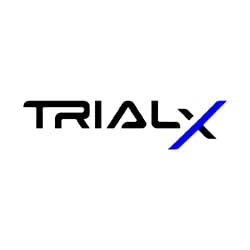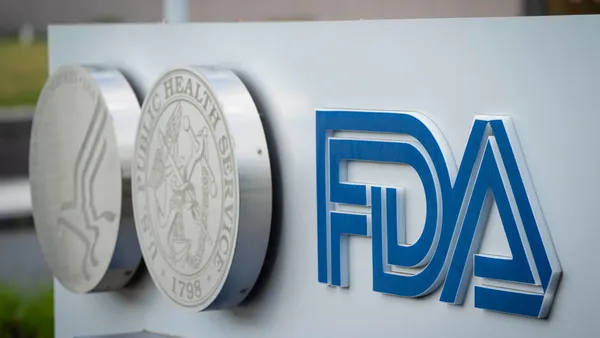Instead of trying to conquer the entire antimigraine market, Frova will stake its claim by focusing on a niche market segment that can benefit from the drug’s unique halflife and superior safety profile Frova isn’t the drug for every migraine patient. The marketers of the latest triptan to enter the antimigraine market — UCB Pharma and Elan — are making a point of telling that to physi cians. The $1.7 billion U.S. market for anti migraine treatments already has five triptans and four powerful marketers fighting for mar ket share (see related box on page 42 for more information). Instead of going headtohead against these wellestablished brands, the strategic marketing plan for Frova is to carve out a niche by highlighting the drug’s two main attributes: the longest halflife of approved triptans and the least drugtodrug interactions in the triptan class of medicines. Frova received U.S. marketing approval in November 2001 for the acute treatment of migraine attacks with or without aura in adults. The newly approved drug was developed by Vernalis Group Plc., a U.K.based biopharma ceutical company, and is being marketed in the U.S. by UCB Pharma Inc. and Elan Corp. “We’re really going to be very specific in helping physicians select the appropriate patient for Frova,” says Dan Setar, former direc tor of marketing for Elan Biopharmaceuticals. “Frova’s unique halflife will be an important option for physicians to consider when looking at patient types and migraine attack profiles, especially patients who have longer duration type migraine and patients who may have a slowerbuilding migraine.” About 23 million Americans experience migraine. Of this number, Frova’s marketers estimate that 15% to 30% have longduration migraine — the niche population best suited to Frova therapy. One of Frova’s major benefits is its long duration of action, thus reducing the rate of migraine recurrence, and benefiting patients who experience longduration headaches, such as migraine associated with a menstrual cycle. “For some individuals the headache goes on,” says Arthur Elkind, M.D., director of the The Right Triptan for the Right Patient SP T Finding BY ELISABETH PENA FROVA difference PharmaVOICE Elkind Headache Center and the principal investigator for six Frova clinical trials. “The other drugs have a very short duration, usual ly measured in several hours. Frovatriptan lasts up to 26 hours, so that will be a great benefit.” As part of Frova’s marketing strategy, Elan and UCB Pharma are creating tools to help physicians get a better handle on specific migraineattack profiles to help them pre scribe the right triptan. “We’re taking a little different approach than some of the other triptans that have been launched recently,” Mr. Setar says. “We’re talking to physicians about looking at specific patients and their migraine types and attack profiles and asking them to prescribe `the right triptan.’ Frova is not the triptan for everybody, but Frova is the right triptan for the right type of patient.” Analysts believe that this approach may allow Frova to create a place for itself in the antimigraine market. “It is a crowded market, however, we think Frova has some differentiating features,” says Sally Bennett, VP of biotechnology equity research at ING Financial Markets. “Particu larly with the salesforces of UCB and Elan, which have specific experience with CNS drugs, we think Frova will be able to carve out a niche for itself in the market.” Under the terms of the copromotion agree ment, UCB and Elan are mar keting Frova to neurologists using their combined CNS salesforce of 265 field person nel. UCB also will promote Frova with its primarycare salesforce of about 475 field representatives. “With these established salesforces we can expand on the current relation ships we have with physicians in primary care and neurology and make sure that we generate nationwide awareness of the fact that Frova is available and that it is filling a need within the medical communi ty,” says Sue Curro, director of mar keting at UCB Pharma Inc. Greater Efficacy Through Long HalfLife Frova’s developers and marketers believe there is a definite need for the longacting triptan in the market. “There are a fair amount of patients who haven’t gotten the pain relief that they want, even though there are five other triptans on the market,” Ms. Curro says. “Patient satisfaction with pain relief is still pret ty low … this market is not completely satisfied and that’s why we think Frova presents a unique therapeutic option in the triptan marketplace — it’s really the first product in a long time that has a different pharmacokinetic profile, specifically related to its halflife.” The biggest difference between Frova and other marketed triptans is its half life — the presence of active compound in the blood. Frova has a halflife of 26 hours. No other currently marketed trip tan has a halflife of more than six hours. Frova’s long halflife translates into longer migraine relief for patients, as well as a lower incidence of returning migraine. “Frova has the lowest recurrence rate of migraine within a 24hour period,” says John Hutchison, MRCP, Ph.D., FFPM, senior VP of development and chief medical officer at Ver nalis. “In our five pivotal FDA trials, Frova’s recurrence rate, averaged 17%, which compares with an average of 30% for the other triptans.” . Americans with migraine:more than 23 million, about 10% of the population . Migraine prevalence in children: 4% to 5% . Missed workdays:112 million a year . Migraine gender prevalence:Before puberty, migraines occur equally in boys and girls. Following puberty, migraines occur in 6% of all men and about 18% of all women . Migraine age prevalence: increases up to age 40 and then declines . Frequency of migraine attacks: as often as once or twice weekly . Heredity factor: About 70% of migraineurs relate a positive family history of migraine. Genetic influence is most striking in migraine with aura . Healthcare costs for migraine care in the U.S.: estimated at more than $1 billion a year . Loss in productivity due to absenteeism and reduced effectiveness at work: $13 billion MIGRAINE MARKET FACTS It is a crowded market, however,FROVA does have some differentiating features … we think it will be able to carve out a niche for itself in the market. FROVA difference PharmaVOICE Consequently, a low recurrence of headaches results in a low remedication rate. Because Frova stays in a patient’s system longer than other triptans, the number of tablets taken per migraine attack is lower, which Frova’s developers say benefits patients in terms of cost of treatment. “Frova provides the same relief with only one pill,” Dr. Elkind says. “Patients only take one pill instead of taking multiple doses, or even sometimes changing from one class of drug to another class. Thus far in clinical prac tice, patients taking Frova take fewer other types of medications.” In addition to a long duration of action, Frova has been found to have a good safety profile and no drugtodrug interactions. In addition, other triptans require dosing adjust ments if patients take other medications, Frova does not. “One of the biggest advantages to the agent is that Frova has a good safety record and there is very little in the way of drug interac tions,” says Dr. Elkind. “For instance, with another triptan patients taking propranolol, a beta blocker, had to take a lower dosage. They don’t have to do that with frovatriptan. Also, if patients are on an oral contraceptive or other drugs to prevent migraine they don’t have to take a lower dosage or amount of Frova.” Also, according to Dr. Elkind, Frova’s one dose size, 2.5 milligrams, can be used for all patients, which means that physicians do not have to modify the dose for elderly people or those with moderate organ impairment. Getting a Piece of theTriptan Pie Triptans have been referred to as “miracle” drugs. The first in this class of drugs was Imitrex (sumatriptan), followed by Zomig (zolmitriptan), Amerge (naratriptan), Maxalt (rizatriptan), and Axert (almotriptan). Relpax (eletriptan), in development by Pfizer, is expected to be released soon. Before the introduction of triptans, avail able pain medications worked by masking the pain. Triptans, however, work in the brain to stop the cause of the pain. By raising the level of serotonin in the brain, triptans reduce the dilation of surrounding blood vessels, ending the source of the pain. The triptan class of medicines is the most commonly prescribed for migraine relief, claiming a 96.2% share of the retail market for migraine medications in 2002, according to ScottLevin Associates. The three bestselling triptans — GlaxoSmithKline’s Imitrex, Merck & Co.’s Maxalt, and AstraZeneca’s Zomig — collectively generated more than $1.5 billion in sales last year, and accounted for 89% of the antimigraine market, accord ing to IMS Health. The bestselling migraine treatment, GlaxoSmithKline’s Imitrex, domi nated the market in 2001 with sales of $798 million. “Yes, migraine is a crowded market and it’s hard to grow,” Mr. Setar says. “But from our perspective, we’ve identified a segment of the patient population that would be very well suited for Frova therapy and our growth will be pretty good and we’ll be very competitive as far as where we stand in the marketplace.” Vital Healthcare, a division of Saatchi and Saatchi, holds the professional account for Frova. Frova’s marketers believe that the agen cy is an excellent choice because of its experi ence in the migraine category. ING Financial analysts estimate Frova’s 2002 sales will be between $20 million and $25 million, with peak sales at $200 million. In July, ING Financial reported that Frova generated 224 new pre scriptions at the end of its launch week, with representatives from UCB conducting 75% to 80% of the detailing. Analysts believe that heavy sampling will be a key part of the Frova launch strategy, as well as the drug’s price per tablet of $15.40, which analysts say is less expensive than Imitrex, but not in line with the heavy discount strategy that Pharmacia has employed with Axert, an oral triptan for the acute treat ment of migraine with or without aura in adults, which was approved for U.S. marketing in May 2001. Treatment Options Migraine treatments are divided into two main types: preventative and abortive. Preven tative drugs are used by a patient on a regular basis to prevent a migraine before it starts. Only four drugs have been approved to pre vent migraine: the beta blockers propranolol and timolol, ergot alkaloid methysergide maleate, and most recently, Abbott Laborato ries’ antiepilepsy drug Depakote. Preventative treatments make up a very small part of the overall market for migraine medicines. The choice between preventative and abortive drugs depends on the frequency of the migraine attacks. “If an individual is having one or two migraines a month, I usually prescribe a trip tan, unless there is a contraindication — trip tans usually are the first line of treatment,” Dr. Elkind says. “Once a patient begins to have more frequent headaches, four or more Beta Blockers . INDERAL (propranolol hydrochloride): WyethAyerst . BLOCADREN (timolol maleate) Merck & Co. Ergots . CAFERGOT (caffeine, ergotamine tartrate): Novartis . ERGOMAR (ergotamine tartrate): New River . MIGRANAL (dihydroergotamine mesylate): Novartis . WIGRAINE (caffeine, ergotamine tartrate); Organon Triptans . AMERGE (naratriptan): Glaxo SmithKline . AXERT (almotriptan): Pharmacia . FROVA (frovatriptan): Elan and UCB Pharma . IMITREX (sumatriptan): Glaxo SmithKline . MAXALT (rizatriptan): Merck & Co. . ZOMIG (zolmitriptan): AstraZeneca SELECTED MIGRAINE MEDICATIONS ONTHEMARKET FROVA difference PharmaVOICE headaches a month, I usually suggest they start a preventive drug.” Frova may be able to capitalize on the mar kets for both types of treatment. Additional development for Frova is expected to focus on preventative use. “The current studies are aimed at prophy laxis because when you have a long duration of action it makes it ideal for dosing in advance of the problem occurring,” Dr. Hutchison says. “It is an opportunity that we can exploit with the profile of this drug.” Frova is a 5HT receptor agonist that binds with a high affinity for the 5HT1B and 5HT1D receptors and is believed to act on extracerebral, intracranial arteries and inhibit excessive dilation of these vessels in migraine. Scientists at Vernalis discovered in preclinical trials that Frova was cerebral selective. This means that Frova is selective for cerebral vascu lature as opposed to peripheral vessels, unlike most of the triptans, which have the same effect on both central and peripheral vessels. “The drug acts on serotonin 1B and 1D receptors in the same way that other triptans work,” Dr. Hutchison says. “But in preclinical testing, we were able to show a separation between the doses that were effective on the vessels supplying the brain over the vessels that were supplying the heart.” The cerebral selective effect has not been confirmed in humans, so that aspect of Frova will not be marketed and the drug will carry the same warning as other triptans. In addition to options about the type of treatment a migraineur should use, physicians have a number of options when it comes to method of delivery. The most commonly pre scribed method of delivery is the oral route. Tablet formulations of triptans claim 72.2% of the antimigraine market, according to Scott Levin Associates. However, other routes of administration, such as subcutaneous injection, quickdissolv ing tablets, and nasal sprays, offer patients faster relief. “It’s an advantage to have multiple formu lations — for individuals who vomit on the onset of a headache or frequently during the headache, a nasal spray or an injectable might be better served,” says Dr. Elkind. “Also in individuals who have quite rapid onset of headache, an injectable drug is best used.” Currently, Frova is available only as a 2.5 milligram tablet. However, scientists at Ver nalis are looking at developing additional for mulations. Although competing triptans, such as Imitrex, Maxalt, and Zomig are available in more than one formulation, Frova’s marketers do not believe this will hurt their drug’s success. “About 90% of the migraine market resides in oral treatments because the oral route is the most preferred,” Mr. Setar says. “Injectables and nasal sprays are for more severe migraine, where there is rapid onset — that is not the patient type that we are neces sarily going after.” Looking Ahead While Frova’s marketers expect that the triptan will create a niche for itself, Vernalis scientists are looking to expand the drug’s treatment possibilities. Trials investigating the use of frovatriptan in the prevention of menstrual migraine, according to Vernalis, will be completed ahead of schedule. The company expects to report findings from the study in early September 2002. In addition, Frova is being studied in adolescents 12 years old to 17 years old in the U.S. “We have been conducting a U.S. trial in more than 400 women with menstrualcycle associated migraine to prevent the headache, which is a slightly different approach than treatment once the headache has started,” Dr. Hutchison says. In January 2002, the mutual recognition procedure for regulatory approval through out the European Union was completed for Frova, with France acting as the reference member state. Menarini Group, an Italian based pharmaceutical company, holds the exclusive marketing rights throughout Europe, where the drug will be arketed as Migard. A European rollout is expected by the end of the year. F PharmaVoice welcomes comments about this article. Email us at [email protected]. Experts on this topic SALLY BENNETT.VP,biotechnology equity research, ING Financial Markets, London; ING Financial Markets is a unit of ING Group,a global financial institution offering banking, insurance, and asset management to more than 50 million private, corporate,and institutional clients in 65 countries SUECURRO.Director of marketing,UCB Pharma Inc., Smyrna,Ga.;UCB Pharma, the pharmaceutical business of Belgium based UCBGroup, focuses on drug development in the fields of allergic diseases and the central nervous system ARTHUR ELKIND,M.D.Director of the Elkind Headache Center,Mount Vernon, N.Y.,clinical assistant professor of medicine at NewYork Medical College of Valhalla,N.Y., andVP of the National Headache Foundation JOHNHUTCHISON,MRCP,PH.D., FFPM.Senior VP, development,and chief medical officer,Vernalis Group Plc., Winneresh,Berkshire,U.K.;Vernalis is a biopharmaceutical company with expertise in the field of neuroscience and CNS medicine DAN SETAR.Director of marketing,Elan Biopharmaceuticals, a business unit of Elan Pharmaceuticals Inc.., a member of the Elan Group,Dublin,Ireland; Elan Bio pharmaceuticals is conducting R&D in Alzheimer’s disease, Parkinson’s disease, multiple sclerosis, pain management, and autoimmune diseases *Editor’s note: As this issue went to press, Mr.Setar is no longer with Elan. The remedication rate for FROVA is low, that is the number of tablets taken per migraine attack,and obviously that has benefits in terms of cost of treatment.
An article from


Finding a Spot for Frova
Filed Under:
Research & Development










